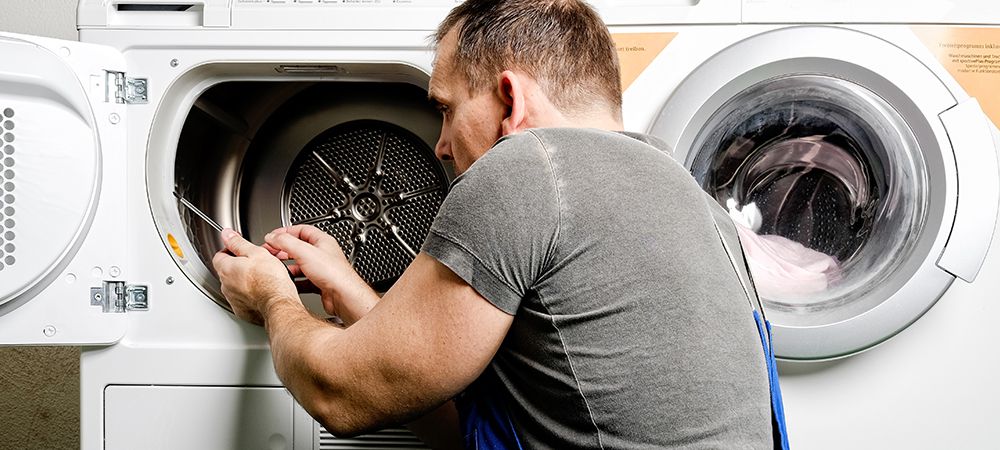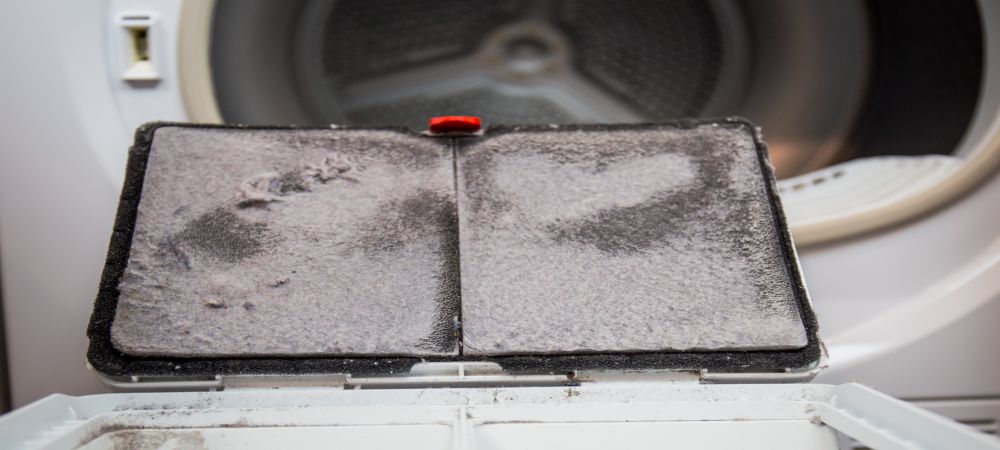Like any other household appliance, a clothes dryer – or simply a “dryer” – is meant to make your life infinitely easier. Typically used immediately after a washing machine, dryers are designed to remove the moisture from your laundry load. This is done with the use of heat, air, and motion.
At some point during your appliance’s life cycle, it may experience some problems – such as overheating. However, this issue is more than just a minor inconvenience. Instead, it can also make your dryer a potential fire and safety hazard, which is why immediate action is paramount. Before calling a licensed repair technician, you would want to run some tests first. Depending on the root cause, you may even be able to fix the problem yourself.
Below, we run through some of the most common reasons why your clothes dryer is overheating – and the corresponding solutions.
Reasons Why Your Dryer Is Overheating and How to Fix
There are three possible reasons why your dryer is emitting too much heat. That is, there might be something wrong with your unit’s airflow, heating element, or cycling thermostat. As previously mentioned, it is critical to act quickly to avoid instigating a fire.
Dryer fires are a major problem in Canada. Toronto alone has an average of 39 dryer-related fires every year. What is even more alarming is that they can occur at a moment’s notice, which means that if you don’t notice the issue early enough, it can very well result in a burning house.
In most cases, dryer fires happen because of a lack of care and maintenance. Some homeowners don’t regularly clean or inspect their dryers. With that said, make it a priority to constantly check up on your appliance, ensuring that it is always in tip-top shape. If it is acting up, then address the problem without delay.
Learn more about some clothes dryer safety tips from the Ontario Fire Marshal and Emergency Management.
1. Limited Airflow
Having a restricted airflow is, without a doubt, the most common reason why your clothes dryer has gotten excessively hot. If your dryer’s internal ducting system is clogged, the hot air will inevitably become trapped inside the drum, causing your appliance to overheat.
How to improve the airflow in your dryer:
- Begin by checking your lint filter. There shouldn’t be any material or debris clogging it.
- Remove all of the build-up lint from the filter, as well as on the metal ducts and exhaust vents.
- Use a vacuum cleaner to draw out any remaining lint and scrap materials.
- Make sure to inspect and clean your lint filter after every laundry session.
Is your dryer still getting hot even after you have cleaned the lint filter? When your appliance is switched on, you may want to check if the ducting is properly pushing air out of the vents. If not, there is probably something wrong with your unit’s ducting system. In this case, we recommend having a professional take a look at your dryer.
Aside from this, you may also want to take a look at the dryer blower wheel, which is designed to blow air throughout the drum and to expel it via the exhaust vent. If the dryer blower wheel is rattling, vibrating, or making loud noises, the dryer may need to be replaced with a new one. Other tell-tale signs of a defective blower include the lack of moving air through the drum or clothes that don’t dry properly even after several cycles.
Related Article: What Is the Cost of Fixing a Clothes Dryer in Toronto?
2. Malfunctioning Heating Element
A faulty heating element is another possible culprit for overheating clothes dryers. Essentially, a heating element is designed to heat the air inside the drum, allowing it to dry your clothes and other textiles.
Over time, the heating element may malfunction. It may move or become warped, causing it to come into contact with the dryer. This, in turn, causes your dryer to generate more heat than usual. To confirm if your heating element is in working order, you will have to test it for continuity using a multimeter.
How to check if the heating element is not working properly:
- Before getting started, make sure to disconnect the dryer from the power source first. Aside from unplugging the appliance from the wall socket, you can also turn off the circuit breaker, for good measure.
- Remove the heating element. The exact method will vary from brand to brand, but it usually involves removing the back panel of the appliance. In any case, make sure to refer to the instruction manual.
- Don’t forget to calibrate the multimeter before use. Set it to the lowest ohm reading. Again, follow the manufacturer’s guide to ensure that the multimeter is properly set up.
- Attach the probes of the multimeter to the heating coils’ terminals.
- The ideal reading is anywhere between 20 and 50 ohms. If the display shows a value significantly outside of that range, it indicates that your heating element is broken and will have to be replaced with a manufacturer-approved spare part. Call a capable appliance repair technician to get the job done.
Related Article: What’s Wrong With Your Dryer? Here Are the Most Common Issues
3. Defective Cycling Thermostat
If neither the airflow nor the heating element is the issue, you might want to take a look at your dryer’s cycling thermometer. This component is in charge of monitoring and regulating the dryer temperatures. More specifically, it turns off the heating element before the temperature gets dangerously high.
Located at the back of the appliance, the thermostat tends to produce heat when it is broken. More importantly, it won’t be able to do its job – which is to detect heat before it reaches a potentially dangerous level and to maintain the proper temperature. To check if the dryer’s cycling thermostat is operating correctly, you will also have to test it for continuity using a multimeter.
Note: Before doing this test, make sure that you have already eliminated other potential culprits for restricted airflow, including issues with the vent, blower wheel, drum seals, and drive motor. When everything else is working fine, it is time to inspect the thermostat.
How to check if the cycling thermostat is defective or not:
- Ensure that your clothes dryer is turned off.
- Set up the multimeter according to the manufacturer’s instructions.
- Remove the back panel of the dryer to access the cycling thermostat. Take it out of the appliance.
- Connect the multimeter’s probes to the relevant wire terminals.
- If the display shows a reading of infinity, then the cycling thermostat will have to be replaced. You can do this by yourself, but if you are uncomfortable with the DIY route, you can always seek the help of a repair technician.
Related Article: What to Do with Your Dryer Not Heating Up
Reliable Clothes Dryer Repair in the Greater Toronto Area
If your clothes dryer still overheats even after following the above steps (or maybe you just don’t like the idea of troubleshooting an appliance), the next step is to call a repair service professional company or professional.
If you are on the hunt for the best appliance repair company in the Greater Toronto Area, you can never go wrong with Prime Appliance Repair. We offer expert diagnosis and five-star service without breaking the bank, ensuring that it won’t be long before your faulty dryer is up and running again. Schedule an appointment with our trained technicians today. Call Prime Appliance Repairs today!








